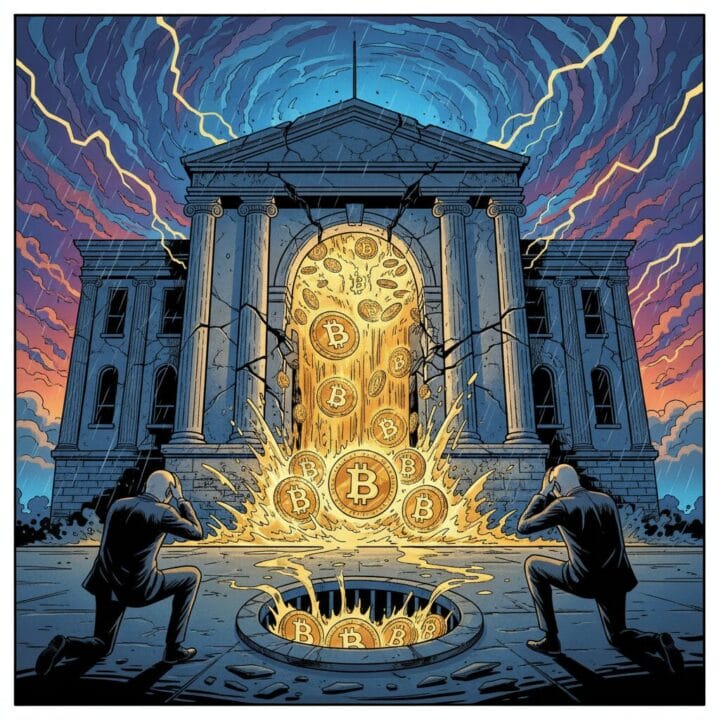Taproot Assets: Paving the Way for Bitcoin as a Global Medium of Exchange

What Are Taproot Assets?
Taproot Assets is a protocol that enables the creation of digital assets on the Bitcoin blockchain with remarkable efficiency. Made possible by the November 2021 Taproot upgrade, it allows assets to be minted and moved using the Lightning Network. The protocol leverages client-side validation, meaning it doesn’t require consensus changes and remains an opt-in feature for users. While its flexibility opens the door to various applications, its primary and most impactful use case is enabling stablecoins on Lightning.
Meeting Global Users on Their Own Terms
For Bitcoin to achieve global adoption, its development must focus on solving real-world problems for everyday users. Many people worldwide lack the time to study monetary theory or the disposable income to absorb market volatility. True adoption won’t come from winning ideological debates but from building tools so useful that they become indispensable. The focus must shift to utility, meeting people where they are and providing solutions that improve their daily lives. This means creating products that users value because they work, not just because they are powered by Bitcoin.
The Overlooked Power of Stablecoins
Whether one supports them or not, stablecoins have undeniably found a massive product-market fit. In Brazil, for instance, stablecoins account for approximately 90% of all crypto transactions, primarily for payments and remittances. Tether (USDT) alone has a market capitalization of over $150 billion and processed more than $10 trillion in volume in 2024. It serves an estimated 434 million users, with a significant portion of its supply held by savers in emerging markets who lack access to U.S. dollars. This widespread use demonstrates a clear global demand for stable, dollar-pegged digital assets.
Building Bitcoin’s Infrastructure First
A common roadmap for Bitcoin adoption follows a progression from store of value to medium of exchange and, finally, to a unit of account. Facilitating stablecoins on the Lightning Network doesn’t hinder this path; it accelerates it. Users who opt for stablecoins on Lightning are not necessarily adopting bitcoin as their primary currency, but they are adopting Bitcoin as a superior payments network. They are onboarding to Bitcoin’s infrastructure because it offers a better, faster, and cheaper alternative to legacy systems like Visa, which must process transactions in 175 different currencies.
A Glimpse into a Multi-Asset Future
The potential of a multi-asset Lightning Network enabled by Taproot Assets is immense. It creates a global, instantly settled payment system where users can transact in their preferred unit of account—be it dollars, euros, or Brazilian reais—while all transactions are routed through Bitcoin liquidity. For example, a business owner in Turkey could sell goods to a merchant in Brazil using a stablecoin. A traditional Bitcoiner could then pay either of them using sats, with the network handling the conversion seamlessly. This creates an inclusive financial rail where people adopt the network for its utility, often before they even realize they are using Bitcoin.
Bitcoin is evolving beyond its role as a digital store of value or a simple medium of exchange. A new dynamic is emerging where holders can earn a yield on their assets, but it comes with a significant trade-off: the coins earning these rewards must be locked away for months or even years.
A growing number of investors are committing their BTC to time-based contracts that promise returns in exchange for temporarily freezing the supply. This trend is tightening the market’s available liquidity, creating a potential pathway for future supply shocks that could significantly impact price. These timelocked and staked coins are introducing a new structural layer to Bitcoin’s Unspent Transaction Output (UTXO) set, directly influencing the free-floating supply and the behavior of the transaction fee market.
How Timelocks are Creating Native Yield
This shift is most visible in protocols like Babylon, which has pioneered a self-custodial staking model. It allows holders to stake their bitcoin without relying on bridges or creating “wrapped” synthetic versions of their coins. Instead, the system uses Bitcoin’s native script capabilities—specifically timelock functions like CLTV and CSV—to enforce the lock-up period directly on the blockchain.
According to Babylon, approximately 56,900 BTC are already staked through its protocol. Because the duration is enforced at the UTXO level, it represents a hard, verifiable commitment rather than a synthetic claim on a separate platform.
The Squeeze on Supply and the Fee Market
The backdrop for this supply tightening is already well-established. The long-term holder supply is near 14.4 million BTC, while the illiquid supply is close to 14.3 million. While these are behavioral metrics, the introduction of hard, script-enforced timelocks adds a new dimension. It further reduces the marginal supply of bitcoin available to meet new demand or absorb selling pressure.
This effect is tangible. For every additional 50,000 BTC that moves into Babylon staking or other hard timelocks, the free-floating supply falls by about 0.25%. While a small percentage, this directly impacts the most liquid part of the market, potentially altering depth at the top of the order book.
This new use for bitcoin also introduces complexities for the fee market. Babylon recently shortened the unbonding delay for new stakes from over a week to roughly 50 hours. At the same time, it increased the preset fee on pre-signed slashing transactions, which are designed to guarantee network security. This creates a delicate balance where, during periods of network congestion, the cost for stakers to manage their positions could rise sharply.
An Expanding Ecosystem Built on Time
Babylon isn’t alone. The entire settlement stack on Bitcoin is adding new consumers of blockspace duration. Citrea is developing a zero-knowledge rollup that settles on Bitcoin, establishing its own finality window that relies on predictable time horizons for collateral. Similarly, Stacks’ sBTC deposits are live, creating another path for BTC-anchored collateral that interacts with Layer 1 over set time windows rather than instant redemptions.
These designs all lean on timelocks to ensure security and settlement guarantees, meaning the demand for locking up BTC can grow even if spot trading activity remains flat. In a financial environment where the U.S. 10-year Treasury offers a risk-free rate near 4%, the narrative for a native, on-chain yield for Bitcoin becomes increasingly compelling.
Technical Upgrades Pave the Way
The timing of these developments aligns with crucial technical upgrades to Bitcoin’s infrastructure. Recent releases of Bitcoin Core have included improvements to transaction relay policies, such as version-3 transaction relay (TRUC) and package relay. These advancements are designed to make transaction packages safer and more predictable, which is vital when many users might need to free their locked coins at once.
These upgrades are critical for reducing the risk that security-critical transactions, like slashing events, fail to process during periods of high network fees. By improving the system’s ability to handle complex transactions during congestion, the Bitcoin network is becoming more robust and better equipped to support this new era of yield-bearing assets.
Disclaimer: The information provided in this article is for informational purposes only and does not constitute financial advice, investment advice, or any other sort of advice. You should not treat any of the website’s content as such. Always conduct your own research and consult with a professional financial advisor before making any investment decisions.
Monitoring Critical On-Chain Metrics
To understand the near-term effects of Babylon’s staking protocol, observers should focus on two practical areas. It’s crucial to note that Babylon’s updated unbonding period only affects newly staked Bitcoin. Older staking guides might still reference the previous 1,008-block delay, so any data analysis must clearly distinguish between different staking cohorts.
Additionally, monitoring fee distribution snapshots—particularly the proportion of low-fee transactions (sub-1 satoshi per virtual byte)—can provide valuable insights. By comparing this data with Babylon’s live staked BTC count, analysts can determine if staking duration increases during periods of low network congestion.
Potential Market Scenarios and Triggers
A sustained increase in the total amount of staked Bitcoin toward the 100,000 BTC mark would be a significant development. Such a milestone would necessitate a re-evaluation of Bitcoin’s available free-float supply scenarios. Furthermore, a consistent shift toward higher median transaction fees would bring Babylon’s preset slashing fee mechanism back into consideration as a more prominent risk factor for stakers.
The emerging picture is a Bitcoin market where a measurable portion of the supply now has a maturity date, defined either by code scripts or by staking terms. Consequently, peak transaction fee behavior is increasingly influenced by how many of these locked-up coins need to move simultaneously. The future shape of this dynamic now depends on Babylon’s total stake count, real-time network fee conditions, and final policy decisions from Bitcoin Core developers.











